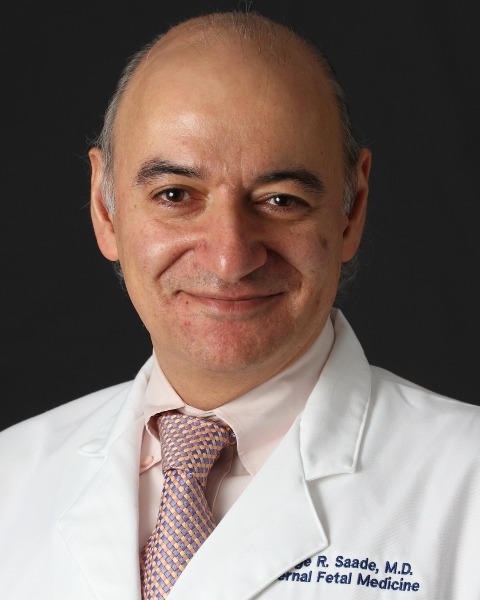Poster Session 3
(684) Impact of a surgical bundle on hospital readmission rates in obese women undergoing cesarean delivery.

Alyssa Savelli Binsted, MD, MS (she/her/hers)
MFM Fellow
Macon & Joan Brock Virginia Health Sciences Eastern Virginia Medical School at Old Dominion University
Norfolk, Virginia, United States- EP
Emily Peters, MD
OBGYN Resident
Macon & Joan Brock Virginia Health Sciences Eastern Virginia Medical School at Old Dominion University
Norfolk, Virginia, United States 
George R. Saade, MD (he/him/his)
Professor and Chair, Associate Dean for Women's Health Obstetrics and Gynecology
Macon & Joan Brock Virginia Health Sciences Eastern Virginia Medical School at Old Dominion University
Norfolk, Virginia, United States
Tetsuya Kawakita, MD, MS
Associate Professor
Macon & Joan Brock Virginia Health Sciences Eastern Virginia Medical School at Old Dominion University
Norfolk, VA, United States
Submitting Author and Presenting Author(s)
Coauthor(s)
To assess whether implementing an obesity surgical bundle for patients with a BMI of 40 kg/m² or greater reduces hospital readmission rates after unscheduled cesarean delivery.
Study Design:
This was a pre- and post-intervention study of individuals with a BMI > 40 kg/m² undergoing unscheduled cesarean delivery at 24 weeks of gestation or greater between January 2018 and December 2022 at a single tertiary care center. In January of 2021, we implemented an obesity bundle that included vaginal preparation with povidone-iodine in the setting of ruptured membranes, and a 48-hour course of oral cephalexin and metronidazole. Our primary outcome was hospital readmission or emergency department visits within 6 weeks postpartum. We also examined the rate of hospital readmission alone. Relative risks with 95% confidence intervals (95% CI) were calculated using modified Poisson regression, adjusting for potential confounders.
Results:
Of 1823 individuals who underwent unscheduled cesarean, 980 (54%) were in the pre-intervention period and 843 (46%) in the post-intervention period. Maternal demographics were overall similar, except for lower gestational age at delivery in the post-intervention period (Table 1). Compared to the pre-intervention period, the rate of hospital readmission or emergency department visits was significantly lower in the post-intervention period (35.0% vs. 28.7%, aRR 0.82 95%CI 0.72-0.94, P < 0.01). Hospital readmission alone was also significantly lower in the post-intervention period (33.0% vs. 26.2%, aRR 0.80 95%CI 0.69-0.92 , P < 0.01) (Table 2).
Conclusion:
The rate of hospital readmissions and emergency department visits decreased significantly after the implementation of a surgical bundle for individuals with a BMI greater than 40 kg/m² undergoing cesarean delivery.

